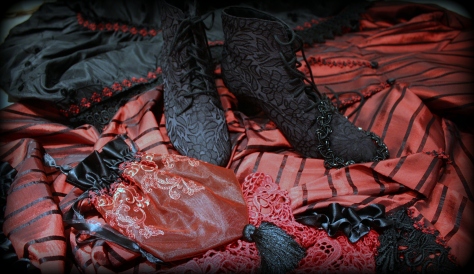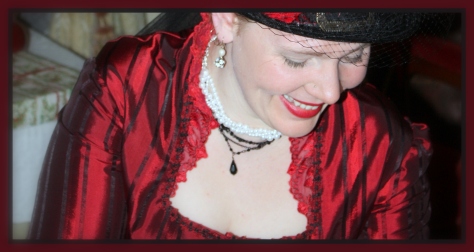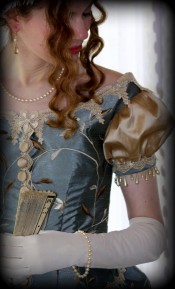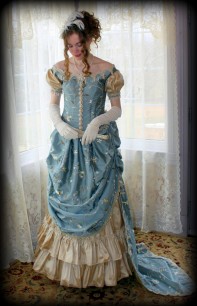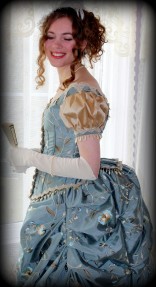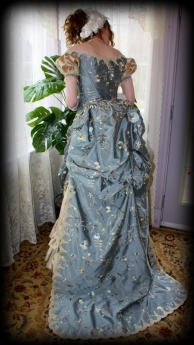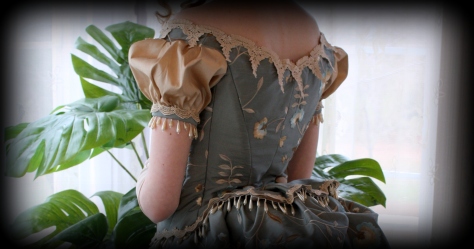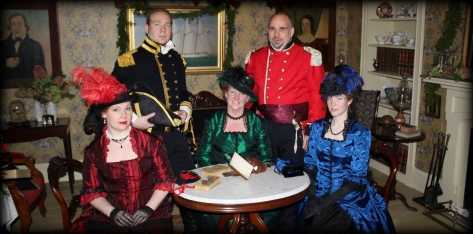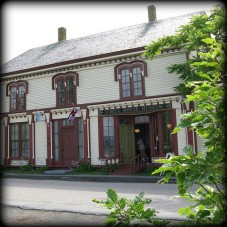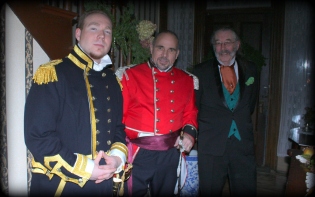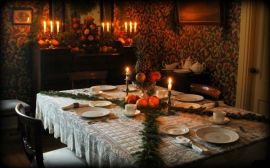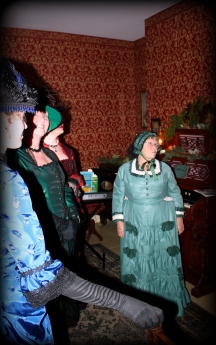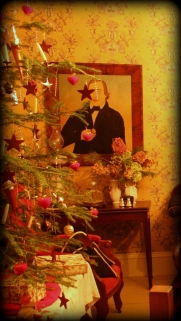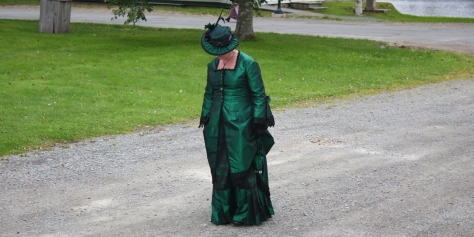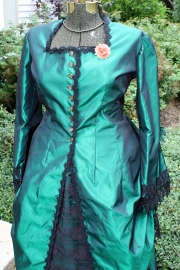I made this striking gown to sell in my Etsy shop, but as soon as my daughter Shara saw it, it became hers. I would say it has “attitude”. She looked so stunning in it that I had to give it to her, and in retrospect, perhaps I made it for her without realizing that I was doing so! Shara and her husband like to do a little Steam Punk once in a while and this gown lends itself to that, as well as to a strictly Victorian look. Shara therefore considers it a pretty versatile addition to have in her historical wardrobe.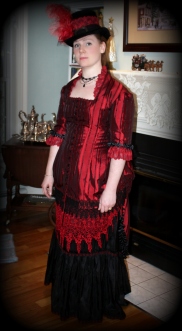 It did look wonderfully festive when it was worn to the Victorian Christmas at the O’Dell House Museum.
It did look wonderfully festive when it was worn to the Victorian Christmas at the O’Dell House Museum.
For accessories, I bought a plain black, buckled, ladies felted top hat to go with it. I decorated it with red lace, black french netting, a few cocky feathers, a black net train and a big red rose. It also has a black parasol and matching reticule. Shara also wears netted black crocheted gloves, and a black beaded choker. Black brocade Victorian style booties complete this ensemble.
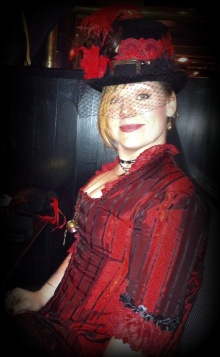 This Victorian walking gown consists of a polonaise and a walking skirt. I find it has a French feeling to it and I also like it as a riding habit. The skirt, which is made from a black embroidered taffeta, has one large ruffle and is trimmed in black and red venise laces and satin ribbon. It is slightly trained at the back.
This Victorian walking gown consists of a polonaise and a walking skirt. I find it has a French feeling to it and I also like it as a riding habit. The skirt, which is made from a black embroidered taffeta, has one large ruffle and is trimmed in black and red venise laces and satin ribbon. It is slightly trained at the back.
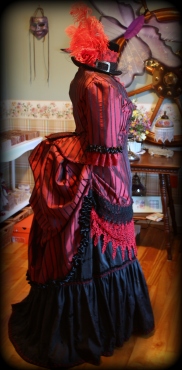 The polonaise, is made in a rich blood red and black shot striped taffeta and is fully lined and boned. It incorporates both the bodice and the over-skirt and has a nice large bustle, as well as a pleated basque at the back. It is trimmed with matching black venise lace, tulle lace at the neckline and sleeves, and ruched black satin ribbon. I had about a half yard of a very long, red, 8 inch venise lace, which matched the red of the taffeta exactly, so I added that to the front of the polonaise as well. I find it really stands out against the black of the skirt. This bodice closes at the front with black satin fabric self made buttons.
The polonaise, is made in a rich blood red and black shot striped taffeta and is fully lined and boned. It incorporates both the bodice and the over-skirt and has a nice large bustle, as well as a pleated basque at the back. It is trimmed with matching black venise lace, tulle lace at the neckline and sleeves, and ruched black satin ribbon. I had about a half yard of a very long, red, 8 inch venise lace, which matched the red of the taffeta exactly, so I added that to the front of the polonaise as well. I find it really stands out against the black of the skirt. This bodice closes at the front with black satin fabric self made buttons.
I’m planning to make a variation of this ensemble again as it is so striking. I have more of the striped taffeta, not only in the red but in a blue as well.
Don’t forget to click on the pictures to get the full size and effect!